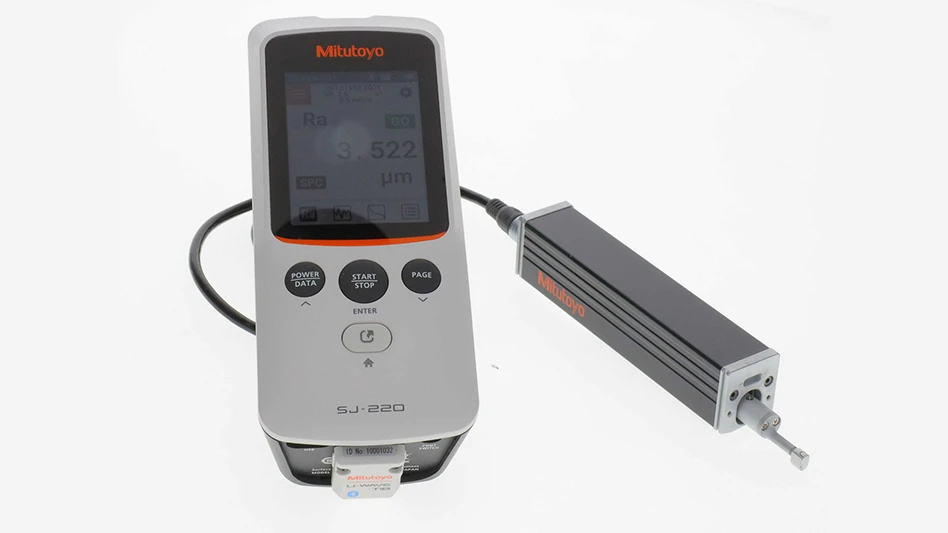
Machining medical components from exotic alloys and harder metals, such as titanium and stainless steel, often requires machining faster than 20,000rpm. At those speeds, improper balance or concentricity of the toolholder or improper seating within the spindle can cause vibration and chatter. When these occur, material removal rates decline dramatically, expensive carbide tools must be replaced more frequently, and the workpiece can be damaged or have poor surface finishes that require secondary bench operations – slowing machining cycle times.
Facing these challenges, Delta Machine Co. LLC, which specializes in titanium machining for the medical and aerospace industries, sought solutions to address the toolholder-spindle interface on new high-speed/high-torque equipment, says President Janos Garaczi.
Delta Machine opted for unique high-torque retention knobs, along with dual-contact spindles designed to keep the toolholder rigidly in place during high-speed machining. Garaczi says the combination of equipment and machining expertise has decreased cycle times as much as 50%, allowing Delta Machine to outbid the competition for projects involving titanium.
“At the end of the day, we are able to run [titanium and stainless steel] much faster than most machine shops,” Garaczi says.
More aggressive approach
Based in Gardena, California, Delta Machine specializes in precision machining complex, tight-tolerance parts out of titanium, stainless steel, aluminum, plastics, and other exotic alloys in high-volume production.
Garaczi, who started with the company as a machinist, eventually worked his way to president and owner. He remains responsible for much of the programming, setups, and purchasing. He recently decided to invest in high-end horizontal machining centers (HMCs) to add to his lights-out operation.
Because the equipment involves a high-torque, high-speed spindle, Garaczi says the CNC manufacturer recommended investing in retention knobs for harder materials such as titanium. Standard, off-the-shelf retention knobs could be used but could shear off or break due to the high torque involved.
“They recommended we use specific high-torque retention knobs because there were scenarios where the high torque could tear off the retention knob and destroy the spindle,” Garaczi says, adding that a replacement spindle can run $40,000 or more to replace.
High Torque retention knobs
Invented by JM Performance Products Inc. (JMPP) founder, John Stoneback, the High Torque retention knob is longer, allowing it to reach deeper into the threaded bore of the toolholder. Thread engagement occurs where there is a thicker cross-section of material in the toolholder. The balanced design also includes a precision pilot to increase rigidity.
“For this type of aggressive machining, if you have a really strong retention knob, it’s going to further increase the rigidity of your setup,” Garaczi says.
Although the retention knobs cost a little more than standard options, Garaczi says he would not risk using an alternative.
“In the aerospace and medical industries, price is a factor, but the customer is more interested in top-quality parts delivered on time,” Garaczi explains.
To maximize rigidity and minimize vibration, Garaczi specifies machines that have dual contact spindles. The toolholder shank (taper) and the flange combine to eliminate pull-back in the spindle.
However, most machining operations do not use dual contact and instead rely on the interface between only the taper and spindle. Retention knobs attached to the threaded end of the toolholder engage with the drawbar, which exerts a pull force that holds it firmly in the spindle.
Traditional retention knobs can create a bulge in the taper when tightened that prevents proper seating in the spindle. Once this expansion occurs, the toolholder will not pull fully into the spindle and cannot make contact with upward of 70% of its surface. By installing the High Torque retention knob with the correct torque, spindle contact with the taper improves to close to 100%, reducing vibration and chatter.

Tool life
Medical component manufacturing can take a toll on the carbide cutting tools when machining exotic alloys and hard metals, requiring cutting tools to be changed more frequently as they dull or break. Increasing rigidity of the toolholder at high rpms with the High Torque retention knob can increase tool life.
According to Garaczi, most shops run titanium about 50ipm, with tool life typically reaching 1.5 hours to 2 hours before replacement. With higher-end, multi-flute endmills and technical carbide inserts, these costs can add up quickly while adding time for frequent changeovers.
“With the High Torque retention knob, we are running 100ipm in titanium and our tools last about 5 hours, which is pretty incredible,” Garaczi says.
The other advantage is a better surface finish, eliminating additional benching operations.
“Usually at the feed rates and speeds that we run titanium, the typical finish expected is 125rms. The retention knob helps achieve a 50rms finish at more than 100ipm” Garaczi concludes.
Delta Machine Co. LLC
www.deltamachineco.com
JM Performance Products Inc.
www.jmperformanceproducts.com
IMTS 2018 Booth #432188
Get curated news on YOUR industry.
Enter your email to receive our newsletters.
Explore the July 2018 Issue
Check out more from this issue and find your next story to read.
Latest from Today's Medical Developments
- Aerospace Industry Outlook - Spring 2025, presented by Richard Aboulafia
- World’s smallest pacemaker is activated by light
- FANUC America’s ready-to-deploy cobot web tool
- #42 Lunch + Learn Podcast - Quell Corp
- Siemens accelerates path toward AI-driven industries through innovation and partnerships
- REGO-FIX’s ForceMaster and powRgrip product lines
- Roundup of some news hires around the manufacturing industry
- Mazak’s INTEGREX j-Series NEO Machines





